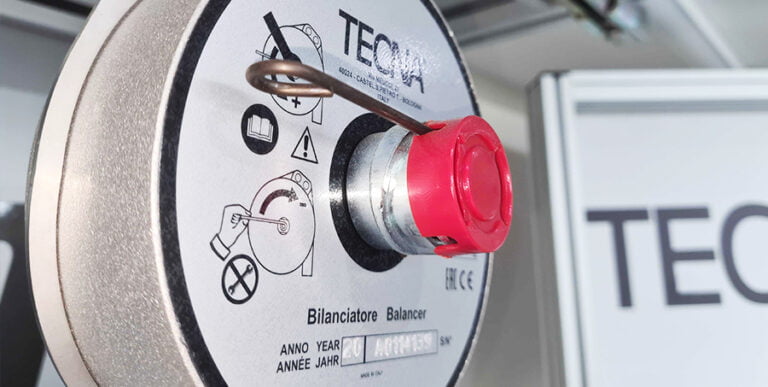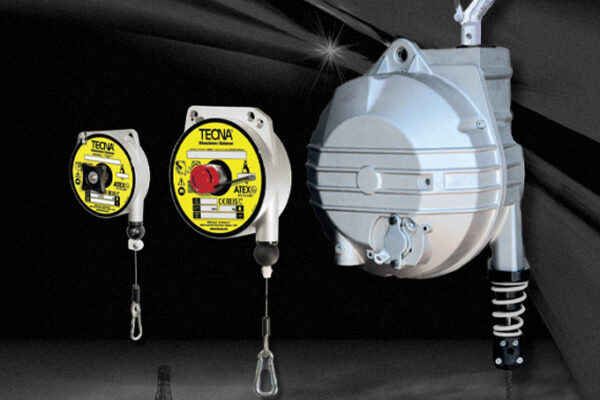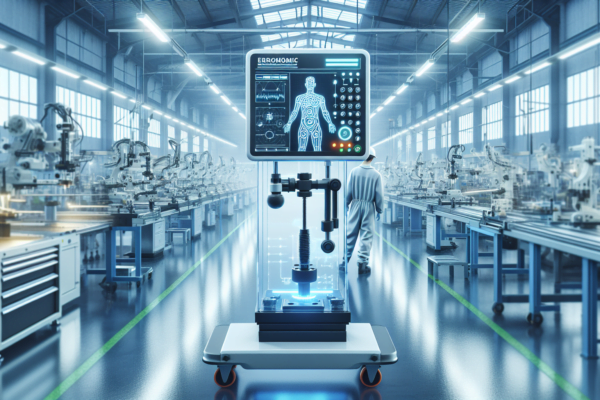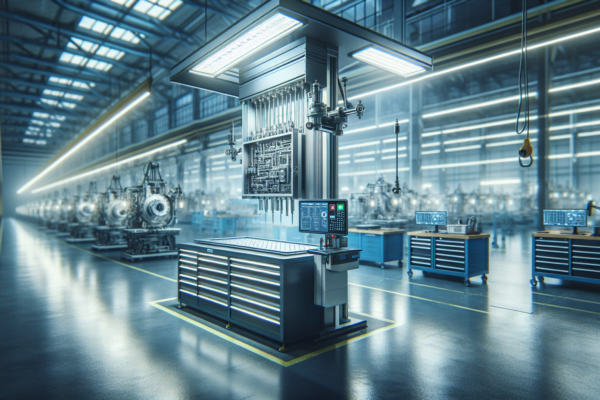Blog
Reduce Workplace Injuries with Proper Tool Balancer Implementation
Workplaces across various industries are rife with hazards that can cause injuries to employees. From construction sites to manufacturing facilities, workers engage in repetitive manual tasks and handle heavy machinery or tools daily. This puts them at high risk for strains, sprains and other musculoskeletal disorders that result in lost time, disability claims, and mounting worker compensation costs for employers. Shockingly, nearly 3 million nonfatal workplace injuries occur in the United States every year. Many of these injuries arise from poor ergonomics and can be prevented with simple solutions to reduce repetitive stress and strain. One such solution is implementing proper tool balancers.
What Are Tool Balancers?
Tool balancers are spring-loaded devices designed to hold tools securely in suspension until needed. They typically mount to the ceiling or wall near a workstation and connect to power tools via a cable, allowing the full weight of the tool to be supported hands-free. Workers can then easily guide the suspended tools into place, using the precise amount of force needed without bearing the tools’ full weight. When released, the tool balancer’s retractable cable gently lifts the tool back into a secure suspension near the workstation. This prevents additional injuries from dropping heavy machinery while also protecting valuable equipment from damage.

Major Use Cases for Tool Balancers
Tool balancers are versatile devices that can benefit a wide range of industries and workplace settings. However, some sectors stand out for their extensive adoption and reliance on tool balancers to mitigate injuries. Understanding the major use cases where tool balancers excel can help facilities identify if and where implementation could significantly improve safety and efficiency.
Automotive Industry
The automotive manufacturing and repair sector has emerged as a predominant user of tool balancers. In 2020 alone, over 20% of global tool balancer demand came from automotive companies and garages. This substantial market share is unsurprising given the uniquely strenuous nature of automotive work.
Mechanics, technicians and assembly line workers often endure intense strain on their necks, shoulders, backs and wrists from repetitive overhead motions and handling heavy machinery like impact guns, wrenches and drills. Extended exposure to these ergonomically unfavourable positions increases susceptibility to painful sprains, pulls and tendonitis over time. Tool balancers eliminate the need to manually support equipment, providing continuous assistance through spring-loaded arms and counterbalance mechanisms.
Aerospace and Aviation
Similar to automotive applications, aerospace manufacturing and maintenance rely extensively on tool balancers to alleviate injury risks. Aircraft technicians work at extreme heights on planes and deal with heavy-duty pneumatic tools for drilling and riveting. Using tool balancers enables workers to manoeuvre equipment efficiently without bearing the full weight or sacrificing stability. This is especially vital when performing precision tasks on hard-to-reach fuselage sections.
Prominent aerospace corporations like Boeing and Airbus have implemented tool balancers across repair hangars and assembly facilities. The long-term dividends from fewer worker strains and increased tool protection make the investment highly cost-effective. Some custom aviation tool balancer models even allow pushing and pulling force adjustments to accommodate changing tasks.
Construction and Building Trades
From commercial sites to home remodels, construction zones present multiple hazards that tool balancers can mitigate. Activities like framing, welding and pipe-fitting require handling substantial loads in awkward positions, often on ladders or scaffolding. This significantly elevates injury risk from losing balance or bearing full tool weight.
Fortunately, rugged contractor-grade tool balancers provide durable assistance for power drills, sanders, nail guns and welding torches. Their strength and mobility empower workers to take equipment wherever needed without overexertion. Many attachments like hooks, magnets and vacuum pads also exist for specialized applications. With enhanced safety and less physical wear, builders remain productive on the job for longer periods.
Implementing Tool Balancers Effectively
Companies that introduced tool balancers saw workplace injuries decrease by an average of 25%. Properly implementing tool balancers requires careful planning, training, and consideration of facility-specific needs. Follow these best practices when introducing tool balancers to maximize safety improvements and return on investment.
Conduct Thorough Facility Assessments
Before purchasing tool balancers, partner with an ergonomics specialist to analyze your workplace equipment and environment. Assess the sizes, weights and usage requirements of hand tools employees utilize daily. Consider workbench heights, walking paths, and potential mounting locations. Understanding unique workplace constraints will allow proper tool balancer selection and positioning. Custom solutions may suit non-standard spaces.
Select Appropriate Tool Balancer Models
With assessment data, choose appropriate tool balancer makes, models, weight capacities and lift heights. Generally, electric or pneumatic balancers suit heavy tools while spring or counterweight balancers work for lighter loads. Consider automatic retraction speeds and programmable sensitivity. Select durable construction to withstand workplace conditions. Investment in high-quality commercial-grade balancers prevents breakdowns.
Strategically Position Tool Balancers
Carefully determine mounting locations in collaboration with workers. Place balancers directly above or beside workstations to allow natural tool positioning without overextension. Suspend from robust structural elements with properly rated anchors. Leave ample clearance around walkways and avoid crossing over employee’s heads. Incorrect placement strains users and risks accidental strikes. Proper positioning minimizes exertion.
Train Employees Thoroughly
Provide supervised hands-on training to employees before full balancer implementation. Demonstrate proper tool attachment and operation. Highlight the ergonomic benefits of relaxed arm and wrist positions. Reinforce new workflows to prevent falling back on old habits. Ensure all workers understand how to use balancers safely. Refresh training as needed until habits form. Ongoing support prevents misuse or abandonment.
Implement Gradually
Phase in tool balancer uses area-by-area to ease the transition. Start with the most injury-prone tasks. Monitor employee feedback and retrain where needed. Once accustomed to initial balancers, continue expanding implementation across all applicable workstations. Gradual adoption allows adjustments rather than overwhelming workers with widespread simultaneous change.
Monitor Effectiveness
Track key metrics before and continuously after installing tool balancers. Document injury rates, ergonomic assessments, productivity numbers, and worker feedback. Compare data to identify improvements. Continual monitoring ensures maximum safety and performance over the long term. Refine approaches to better leverage tool balancers as needs evolve.
Investing properly in the right tool balancers and positioning them effectively can significantly enhance comfort, safety and productivity. An ergonomic specialist can help develop custom workplace solutions. What practices have you found most effective for implementing tool balancers? Please share your experiences in the comments.
The Business Case for Investing in Tool Balancers
Implementing tool balancers in your facility requires an upfront investment, but the payoff in increased safety, productivity, and cost savings makes it a smart business decision. Companies that have introduced tool balancers have seen workplace injuries decrease by an average of 25%, allowing them to avoid costly medical claims and lost time due to injury. The increased ergonomics also leads to less worker fatigue, allowing employees to maintain focus and quality output over longer periods.
In addition to the safety benefits, the efficiency gains of using tool balancers are significant. By reducing strain and manual handling of heavy machinery, workers can complete tasks faster and with greater accuracy. This leads to higher productivity and output quality. Several studies have shown that companies see a return on their investment in tool balancers in as little as 18 months through increased output and injury reduction alone.
When examining the costs of implementing tool balancers, be sure to calculate savings from the following factors:
- Reduced workplace injury claims and associated medical costs
- Less lost time from injured workers away from the job
- Increased output and efficiency from workers
- Improved product quality through consistent output
- Lower employee turnover rates thanks to improved safety and ergonomics
The total cost savings can be substantial. For example, a manufacturing facility with 50 workers handling heavy machinery may invest $35,000 to install 20 electric tool balancers. But they can yield annual savings of $100,000 through safety and productivity gains. This represents an exceptional ROI.
The Case for Investing in Tool Balancers
Implementing tool balancers can significantly enhance workplace safety while providing tangible business benefits. As highlighted in this article, nearly 3 million nonfatal workplace injuries occur in the US annually from heavy tool use and repetitive tasks. Companies that have introduced tool balancers saw workplace injuries decrease by an average of 25%, allowing them to avoid lost productivity and worker compensation claims.
Beyond injury reduction, tool balancers delivered an 18-month average return on investment for companies based on increased worker retention and efficiency gains. For example, aerospace manufacturer Boeing utilizes over 1,000 tool balancers in their factories, citing major ergonomic improvements that support a highly reliable production system. With capacities up to 100kg and compatibility with LEAN manufacturing methods, electric tool balancers represent a cost-effective solution for reducing strain.
In summary, implementing tool balancers properly allows organizations across automotive, aerospace, construction and other industries to create safer, more sustainable workplaces. Consult with one of our experts today who can help you conduct a workplace assessment and install customised tool balancers that enhance flexibility and precision for operators. This upfront investment will pay dividends over the long term through measurable improvements in injury rates, quality, and productivity. Prioritizing worker health and safety with effective tool balancer solutions is a best practice that all businesses should adopt.







